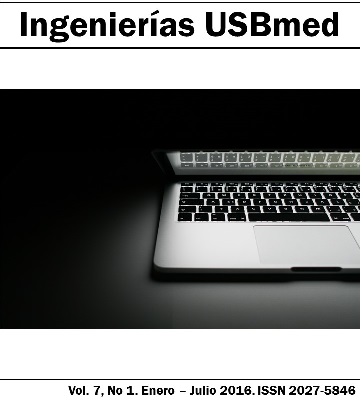This journal provides immediately free access to its contents under the principle that make available the research results for free to the public, helps for a greater global exchange of knowledge.
Therefore, the journal invokes the Creative Commons 4.0
License attributions: Recognition – Non-commertial - Share equal. Commercial use and distribution of original or derivative works are not permitted and must be done with a equal license as the one that regulate the original work.
Abstract
Agilizar el acceso al contenido, disminuyendo los tiempos de navegación por los catálogos multimedia, es uno de los retos del servicio de video bajo demanda (VoD), el cual es consecuencia del incremento de la cantidad de contenidos en las redes actuales. En este artículo, se describe el proceso de conformación de un dataset de videos musicales. Este dataset fue usado para el diseño e implementación de un servicio de VoD, el cual busca mejorar el acceso al contenido, mediante la clasificación musical de emociones. Así, en este trabajo se presenta la adaptación de un modelo de clasificación de emociones a partir del modelo de arousal-valence. Además, se describe el desarrollo de una herramienta Java para la clasificación de contenidos, la cual fue usada en la conformación del dataset. Finalmente, con el propósito de evaluar el dataset construido, se muestra la estructura funcional del servicio de VoD desarrollado.
References
[2] J. Altgeld y D. Z. John, «The IPTV/VoD Challenge: Upcoming Business Models,» de Achieving the Triple Play: Technologies and Business Models for Success, Intl. Engineering Consortiu, 2006, p. 3.
[3] S. Paul, Digital video distribution in broadband, television, mobile and converged networks: trends, challenges and solutions, New york: Wiley, 2011.
[4] P. Andersen y L. Guerrero, Handbook of communication and emotion, California : Academic Press, 1997.
[5] H. Chen y Y. Yang, Music Emotion Recognition, Taiwan: CRC Press, 2011.
[6] R. Fay y M. Jones, Music Perception, Ohio: Springer, 2010.
[7] J. Rivera, «Acceso a Datos con DataSets en Visual Web Developer 2008/2010,» Conciencia Tecnológica, pp. 47-51, 2011.
[8] T. Jehan y B. Whitman, «The Echonest,» MIT Media Lab, Junio 2005. [En línea]. Available: http://the.echonest.com/. [Último acceso: 13 Enero 2016].
[9] J. Russell, «A Circumplex Model of Affect,» de Personality and Social Psychology, Vancouver , APA journals , 1980, pp. 1161-1178.
[10] K. Hevner, «Experimental Studies of the Elements of Expression in Music,» de The American Journal of Psychology, Illinois, Jstor, 1936, pp. 246-268.
[11] R. Plutchik, «The Nature of Emotions,» de American Scientist, Florida, American Scientist, 2001, pp. 344-350.
[12] V. Castaignet y V. Frederic, «Musicovery,» Junio 2006. [En línea]. Available: http://musicovery.com/api/doc/documentation.php. [Último acceso: 2 Marzo 2016].
[13] T. Kan y S. Scherf, «Gracenote,» Tribune Media Company, 1998. [En línea]. Available: https://developer.gracenote.com/web-api. [Último acceso: 2 Marzo 2016].
[14] J. Posner y J. Russell, «The circumplex model of affect: An integrative approach to affective neuroscience, cognitive development, and psychopathology,» de Dev Psychopathol, New York, NIH, 2005, p. 715–734.
[15] O. Meyers, A Mood-Based Music Classification and Exploration System, Massachusetts: Massachusetts Institute of Technology, 2004.














